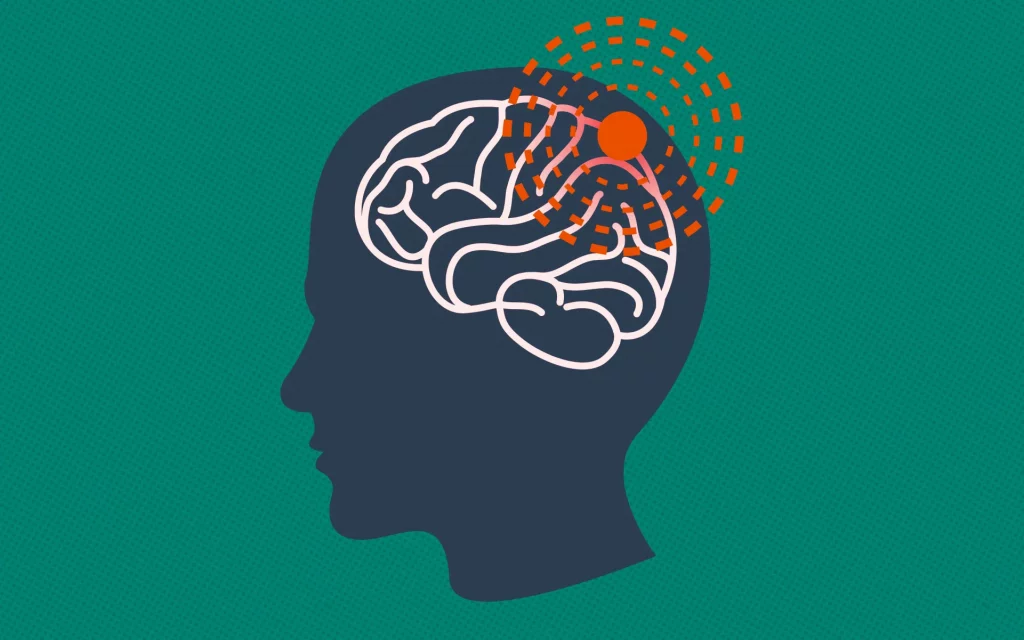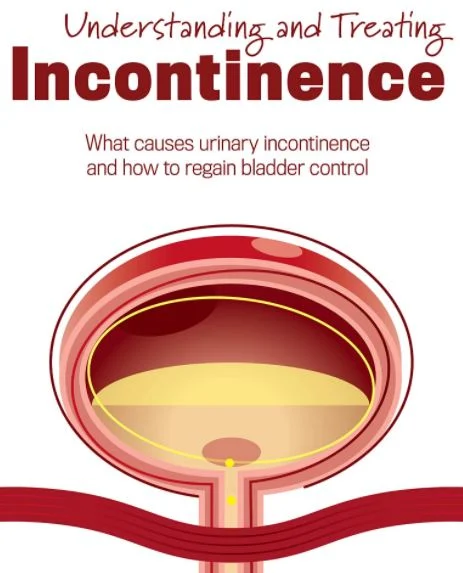How new advanced stem cell treatments help migraine sufferers avoid medications that may not work or cause side effects.
Nearly everyone gets headaches from time to time. Most are usually mild and don’t cause pain for more than a few hours or so.
But migraine headaches are very different – and usually far more severe. Not only do migraine headaches cause far more serious pain than other types of headaches, but they also come with other symptoms that can be even more debilitating — such as nausea, temporary loss of vision, sensitivity to light, or seeing flashing lights.
Although not everyone is subject to migraines, about one in eight people do suffer from this condition, with women more likely than men to be susceptible. If you suffer from migraines, you know how these attacks can easily ruin a day or more.
While medications and in some cases, surgery are offered as a treatment for patients, medications are often ineffective and come with unwanted side effects. And surgery poses an additional risk of complications.
But new research demonstrates that stem cell therapy offers another option – with even more effective results through treatment with high-potency stem cells.
What Is A Migraine?
Not just a really bad headache
Headaches can be caused by many different conditions. Some people suffer from headaches associated with dehydration, fatigue, or stress. In some cases, headaches can be symptoms of diseases such as infections, sinusitis, and many others. There are many other possible conditions that can trigger a headache, for example, drinking a cold beverage too quickly or a dental disorder. And while headache pain can be a symptom of a serious neurological condition, that’s not usually the case.
But those who suffer from migraines know that this is a far different disorder than a mere “garden variety” headache. And they know that the medical community doesn’t have many options to help prevent migraine attacks or alleviate symptoms. That’s why new research into stem cell therapy shows great promise.
Although scientists aren’t certain what causes migraine, nor exactly why some people suffer from migraine attacks while others do not, research shows that there’s likely a genetic connection and that migraine is based on neurology.
Characteristics of a migraine
One frustrating aspect of migraine is that attacks come without warning, maybe either frequent or relatively rare, and affect patients at any age
- For some, migraines begin during childhood. For others, they begin later in life.
- Some patients can go for years between attacks, while in other cases they can occur far more frequently. Some patients experience migraines several times per month, while others suffer only one or two attacks per year.
- The migraine attacks can last for several hours or even days.
- Migraines cause extreme pain and symptoms that can be debilitating.
- Events associated with migraines can vary. For example, some patients with a traumatic brain injury may suffer from migraines. Other patients report that exposure to certain types of light can either trigger an attack or make one worse.
Unlike a headache that’s caused by other conditions, a migraine usually occurs across three distinct stages.
Stage 1: The prodrome stage
A migraine often begins with symptoms that include:
- Digestive conditions, such as bloating and diarrhea
- Mood changes or extreme fatigue
- Food cravings
Stage 2: The “aura” stage
The next stage of migraine occurs over a few minutes or a few hours and is associated with symptoms such as:
- Weakness or numbness in various parts of the body
- Visual disturbance, such as blind spots or tunnel vision
- Difficulty speaking in complete sentences
- Intense ringing in the ears
Stage 3: The main migraine pain stage
Once the main pain stage of a migraine attack sets in, patients may experience:
- Nausea and vomiting
- Pain in the head, often on just one side of the head, but sometimes both
- Extreme sensitivity to light and sound, and in some cases sensitivity to touch and odors
But why do patients suffer from migraines in the first place? Although scientists aren’t certain, ongoing research suggests a few promising avenues for future study
What causes migraines?
In some cases, the onset of migraines appears to be linked to a specific injury. For example, some patients who have suffered a head injury may begin to experience migraines. Depending on the severity of the injury, migraines may occur for a few weeks or a few years.
In most cases, however, the cause isn’t very clear. At one time it was thought that fluctuations in blood flow caused migraines, but researchers now believe that while such fluctuations can make the pain more severe, that’s not likely the actual cause of the attacks themselves. There have been many areas of study including:
- migraines result from a neurovascular pain syndrome that alters central neuronal processing and the trigeminovascular system.
- migraine may be caused by alternations in the subcortical aminergic sensory modulatory system
- that chemical compounds and hormones in the brain are associated with severity of symptoms, for example fluctuating levels of neurotransmitters such as serotonin.
These aren’t the only theories that researchers are studying. One promising area of research is the role that inflammation plays in either triggering attacks or increasing the severity of symptoms. Indeed, inflammation, while once viewed as relatively benign, can be the root cause of many different diseases and disorders throughout the body.
Indeed, research has shown migraine may be associated with neuroinflammation in specific areas of the brain – and that migraine may get worse as these inflammation levels get higher.
While the specific cause may not be clear, there do seem to be specific triggers associated with the frequency of migraines. These include:
- Stress
- Consumption of alcohol and caffeine
- Changes in weather
- Certain foods, one notable example being bleu cheese
Although avoiding potential triggers may help patients subject to migraine attacks, it’s not always possible to avoid specific triggers – putting an EMPHASIS on treating migraines when they occur.
Conventional treatment methods for migraines
Patients who suffer from migraines will often several different treatments, but results can vary leaving many patients frustrated. Some of these treatments include:
Specific diets and nutrients:
Some herbs, vitamins, and minerals may be effective in reducing the number of migraine attacks. One example is the herb feverfew, which can help reduce the number of attacks and severity of symptoms. Or patients may suffer a deficiency in a critical vitamin and take a supplement to help reduce migraine frequency.
Acupuncture:
Because acupuncture stimulates specific nerves, it may be effective in stimulating the immune and circulatory system to reduce migraine intensity and frequency. A recent review of 22 clinical trials shows that acupuncture can reduce the frequency of migraines
Medications to relieve symptoms:
There are two approaches to using medications to help patients with migraines. One is to relieve symptoms when attacks occur, with another approach based on medications to prevent attacks or reduce their frequency.
For symptom relief, some physicians recommend an over-the-counter analgesic, such as acetaminophen (or Tylenol). Although acetaminophen may be helpful, too much of this medication can be harmful if taken too frequently.
Ergotamines are another type of medication that can help relieve migraines because this medication contracts the blood vessels in the brain, which can help relieve pain. Unfortunately, ergotamines can have dangerous side effects, such as birth defects and heart problems, so long-term use is discouraged by most medical professionals.
What’s more, too much of any medication can backfire. That’s because regular use can cause the body to respond in a way that creates even more headaches. This is a complication called “medication overuse headache,” which actually makes the problem worse.
Preventative medications:
The second approach to medications doesn’t address symptom relief, but prevents migraine attacks so these are medications taken daily. Typically, these medications have been developed to treat other conditions but may help reduce migraine frequency because they tend to reduce pressure in the body. These include:
- Antidepressants
- Beta-blockers
- Anticonvulsants
Botox may also be effective in preventing migraines because an injection of Botox into the forehead or neck muscles can relieve the pressure thought to cause migraines.
Surgery:
Surgical intervention is only reserved for the most severe cases because it can pose far more risk of complications. Two surgical options that are still deemed experimental include:
- Neurostimulation surgery to insert electrodes under the skin in certain areas of the head. These electrodes signal through the brain to activate nerve cells that can help change the way the body processes pain signals.
- Migraine trigger site decompression surgery – a procedure that involves releasing nerves in the head and face that may trigger a migraine by deactivating or decompressing these specific nerves.
Unfortunately, there are patients who do not respond to any of these treatment methods – diet, acupuncture, medications, or even surgery. While such patients once thought they’d run out of treatment options, many have discovered that recent innovations in stem cell therapy offer new hope when there was once none.
How stem cell therapy can help prevent migraines and alleviate symptoms
Stem cell therapy represents a ground-breaking and innovative approach to optimize health and help cure many different diseases and disorders. Stem cell therapy works because it’s based on the body’s natural repair processes.
You see, while the cells in your body perform a specific biological function – digestive cells to process nutrients, nerve cells to send signals throughout your body, etc., each begins as a stem cell created in your bone marrow. An infusion of stem cells gives your body more cells that can be used to generate new cells to repair damaged tissue.
Indeed, stem cell therapy has demonstrated exceptional promise in treating patients with traumatic brain injuries, strokes, and other conditions. These stem cells can also be used to stimulate repair of blood vessels and neurons in brain structures such as the hippocampus, which can help patients who suffer from migraines reduce the frequency of attacks and alleviate severity of symptoms.
Stem cell therapy also helps modulate the immune system to reduce inflammation throughout the body, including the long-term neuroinflammation that may be associated with migraines. Because stem cells regenerate damage tissues, they can be used to create new new neurons or blood vessels in the brain, which in turn, could help prevent migraines.
Because stem cell therapy is generally a non-invasive procedure – usually a simple IV – it poses less risk of complications than surgery. And because stem cells are the body’s “natural repair kit,” there are no side effects common to medications.
Excellent results based on new research
Researchers at the New York Headache Center and Cornell Medical College studied the use of stem cells to treat patients with severe migraines who had not responded to conventional treatment methods.
Between 2.5 to 8.6 million stem cells were injected into the pericranial, neck, and trapezius muscles of these patients. They were evaluated after three months based on the Migraine Disability Assessment (MIDAS). Before they received the stem cell injections, their mean MIDAS score was 122. Three months after treatment, those scores dropped to a mean of 88.
The study concluded that stem cell therapy may be effective in treating chronic refractory migraines.
Researchers in Australia studied stem cell therapy as a treatment for women between the ages of 36 and 44 who had experienced chronic migraines for an extended period of time and met the International Classification of Headache Disorders criteria for chronic migraines.
The women were given an IV of stem cells over the course of one hour, then evaluated over the next 18 months. Some patients reported no more migraines at all, while others who still had migraines experienced them less frequently and with symptoms less severe.
Although research continues, initial results look promising, showcasing how stem cell therapy can be effective in treating a wide range of brain conditions.
At BioXcellerator, we continue to develop new therapy protocols to help patients who suffer from migraines — with a focus on offering treatment with the stem cells of the highest possible potency.
Golden Cells: Millions of high-potency stem cells
Although there are many stem cell treatment clinics, some tend to focus on the treatment itself, but the quality of the stem cells can make a significant difference in results.
That’s why the BioXcellerator research team has developed an innovative and proprietary process for making sure patients receive cells of the highest possible potency. Using mesenchymal stem cells (MSCs) from donated umbilical cords, these cells are screened for specific biological markers that indicate high potency. Only these cells are then purified and reproduced into millions of “Golden Cells” that offer the best therapeutic potential.
These cells provide stronger anti-inflammatory and regeneration abilities than other stem cells, which can make therapy even more effective – helping migraine patients suffer less pain and improve the quality of their lives.
Ask your healthcare provider about stem cells as a potential treatment options for your recurring migraines.


